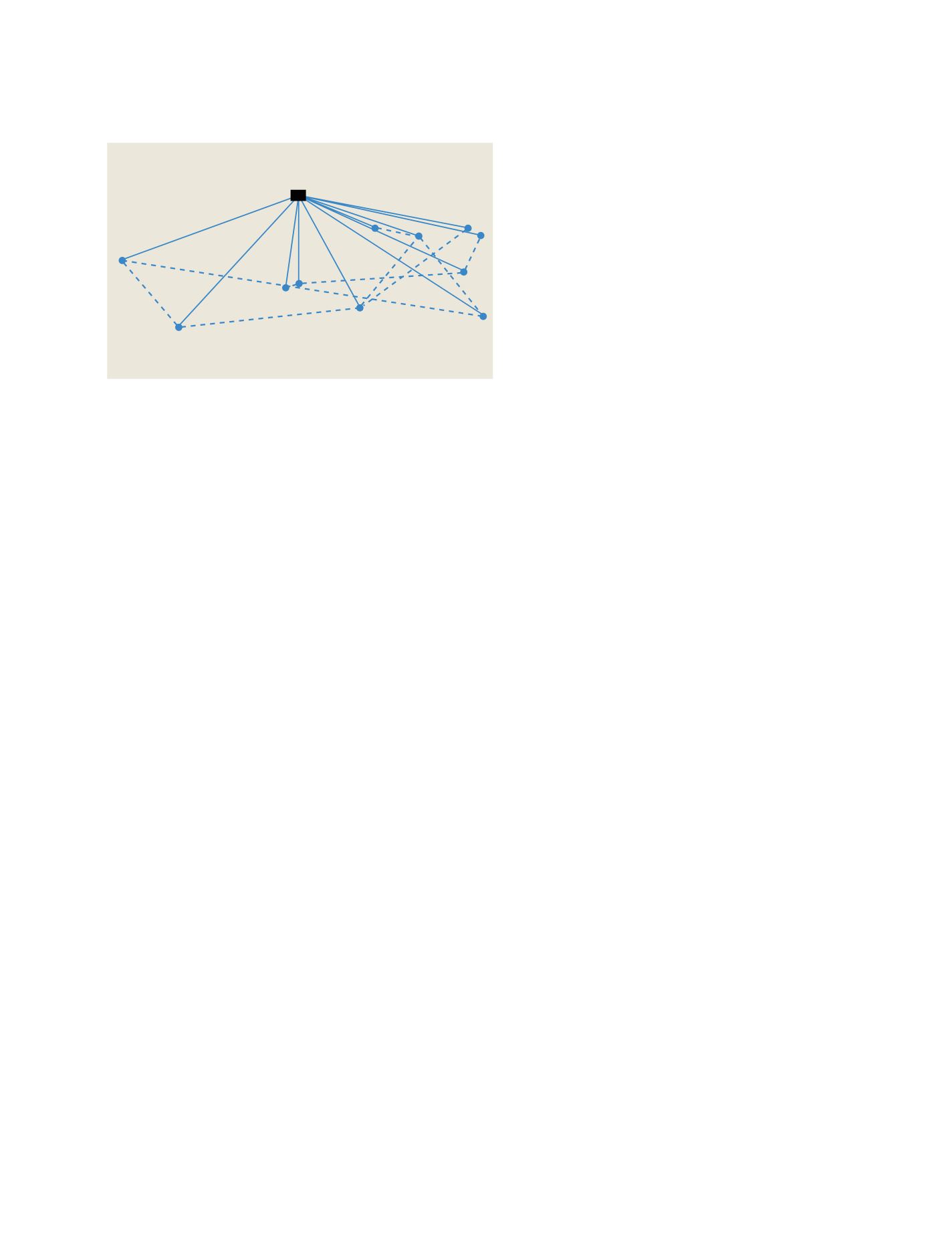

[
] 122
an official mandate and legal position embedded in existing frame-
works of higher education. Therefore it is important to involve
academic institutions and university departments in these activities
rather than only the training branches of professional organizations.
Financial sustainability
– each partner should arrange funding for
their own activities from their own regular resources. The student-
related expenses are jointly pursued from a variety of fellowship and
scholarship programmes.
Partners generally participate in several partnerships which could
in principle be up-scaled into multilateral regional or even global
networks. Within these networks decentralized supply chains for
education services can develop.
7
Different partners in the network
will have their own competences and fields of expertise; these can be
combined into one educational program or course. Students will visit
these partners for the different educational modules when follow-
ing the programme.
A more relaxed form is possible too, where partnerships are based
on agreements for the transfer of credit points. There is no joint
programme, but students follow educational modules elsewhere as
part of a programme at their home institute. These decentralized
supply chains will make more and more use of distance learning
approaches to reduce travelling costs to students.
The ITC example
The International Institute for Geo-Information Science and Earth
Observation (ITC) has been involved in CD through educational
partnerships for many decades. As part of the next stage ITC has
developed partnerships with universities and institutes on four differ-
ent continents. These partnerships deliver joint educational
programmes and provide educational services in the countries or
regions where many of the ITC course participants come from. The
effectiveness, flexibility and productivity of the ITC educational
system has thus been improved substantially.
8
These partnerships have developed into an educational network
called GI-NET, which will ultimately serve as a base for decentral-
ized supply chains for educational services. e-learning tools are
presently used for mutual support of the lecturers at the different
nodes. But these tools are also used for offering short courses through
distance learning and blended learning approaches, and we expect
to offer complete degree courses in due time. The different nodes of
the network will each take their share of the development and
support of such courses. Through the global spread of the network
24/7 support will be possible. The nodes of the network
can also give regional support to the course participants
and alumni by arranging regional seminars and work-
shops
ITC acts as a driving node in this network and guar-
antees its academic sustainability through continuous
impulses for academic and professional upgrading and
innovations of the educational services.
9
Furthermore
it also stimulates mutual exchange and support between
the other nodes of the network.
The educational programmes at ITC’s home base
provide the experience. In this role, they serve as a
vehicle for permanent educational innovation with
respect to content, educational methods and tools, and
quality assurance. Rapid developments in technology,
as well as in the demand for information, imply the need
for continuous upgrading of professionals through life-
long learning. According to the InterAcademy Council,
2004
10
: “…all nations, particularly the developing ones,
require an increased level of science and technology
capacity to enhance their ability to adopt new tech-
nologies…. and adapt them to local needs”.
Institutes for higher education must be up to date with
these developments and a strong interaction between
education and research is therefore needed. ITC is
presently developing partnerships for research purposes
with organizations in less developed countries, which
often have no sufficient resources to develop their own
research activities. This research network creates oppor-
tunities for the colleagues of those partner organizations
to participate in the research programmes of ITC and of
other strong research partners.
ITC is active in several other networks besides GI-
NET, including the GIMA programme with three Dutch
universities, an Erasmus Mundus programme with
several European universities and the United Nations
University (UNU) network. These networks are
connected because they have ITC as a common node.
Through this position ITC can transfer experience and
knowledge between networks and also be the gateway
for staff and students to move between networks.
Towards a virtual university for geo-information
science and EO
Networks with decentralised educational service supply
chains, with different types of educational partnerships
and with different concepts for joint courses and joint
degree programmes form an interesting starting posi-
tion for the development of a virtual university for
Geo-Information Science and Earth Observation.
The present partnerships are bilateral. The first stage is
always a memorandum of understanding stating that both
parties have the intention to enter into a partnership.
Based on this, they will generate an agreement which
defines the set up of the joint educational programme,
including the duties, contributions and responsibilities
of both parties, as well as the financial arrangements.
The network structure required for the development
of a virtual university is quite different from a standard
Partners generally participate in several partnerships which could in
principle be up-scaled into multilateral regional or even global networks
Education networks for capacity development
Source: ITC
















